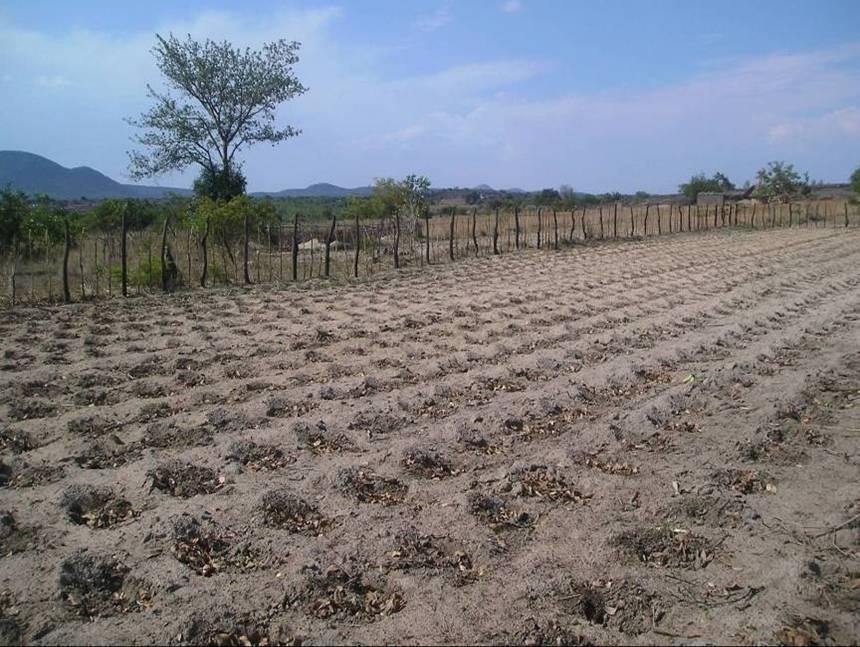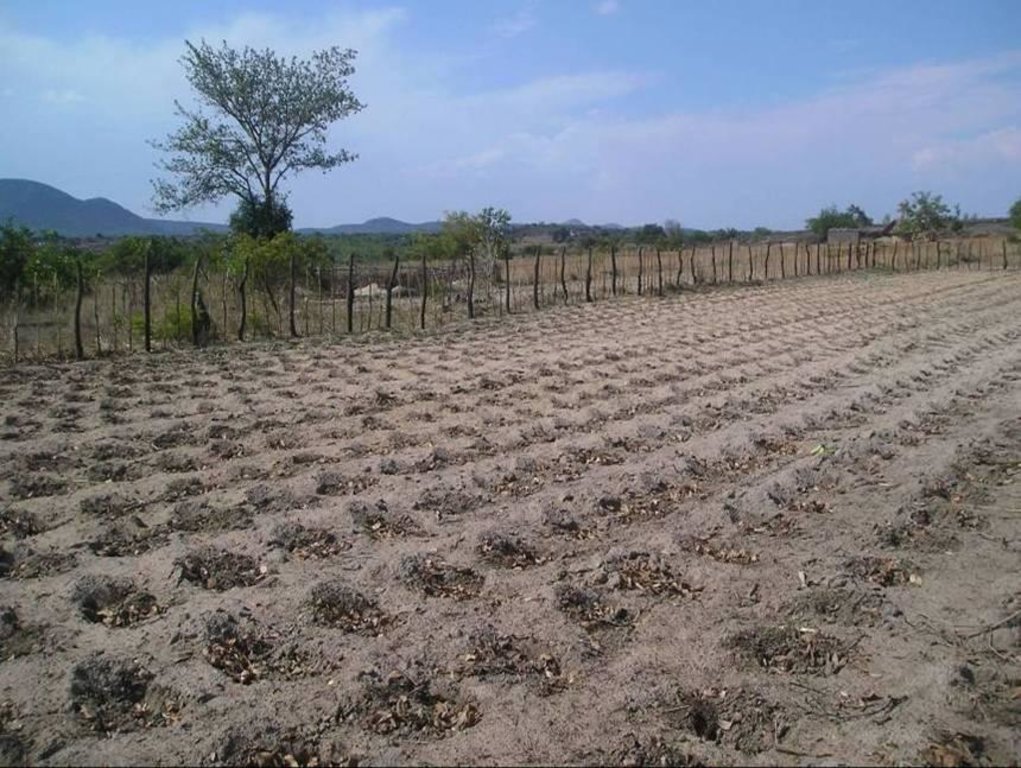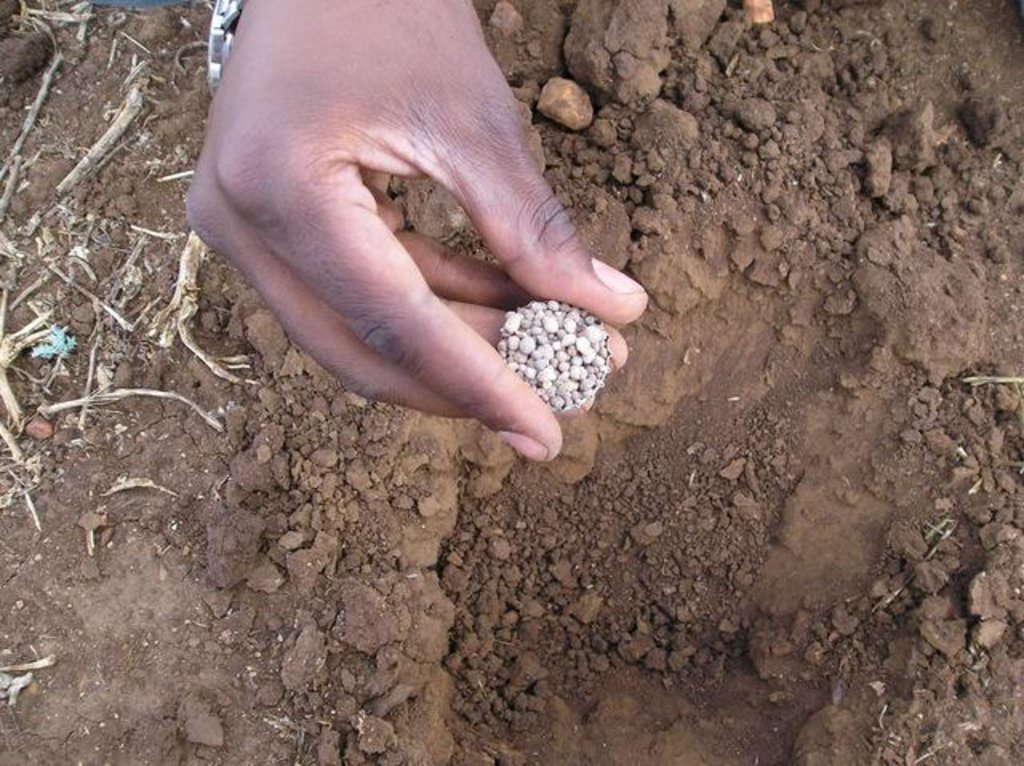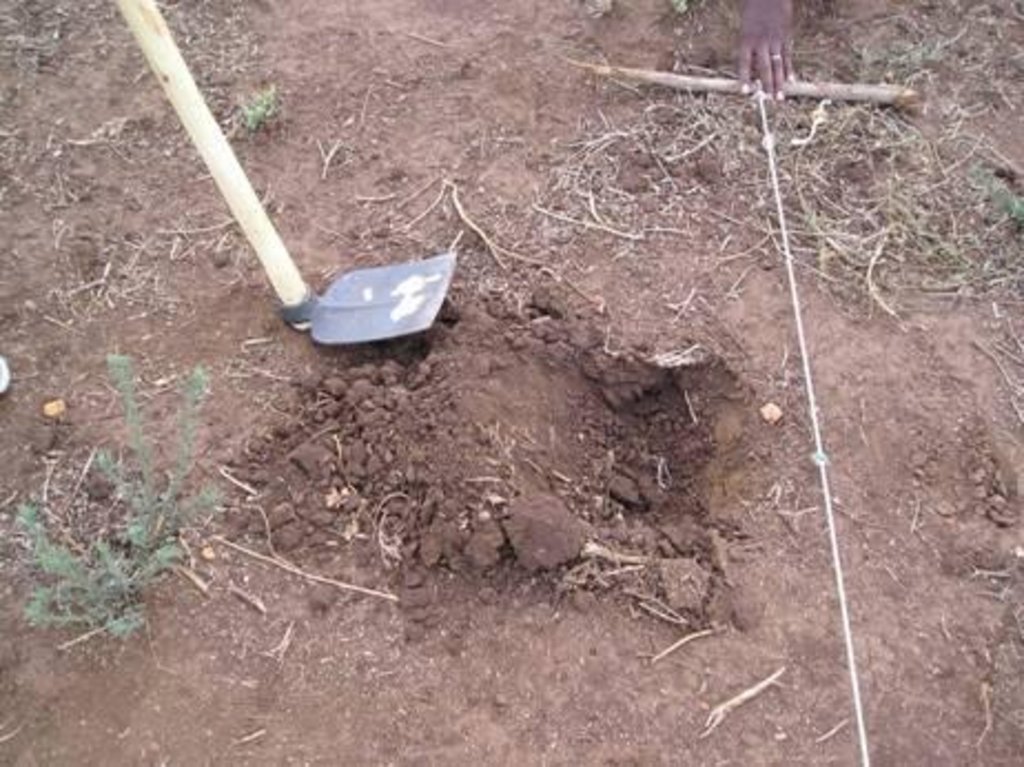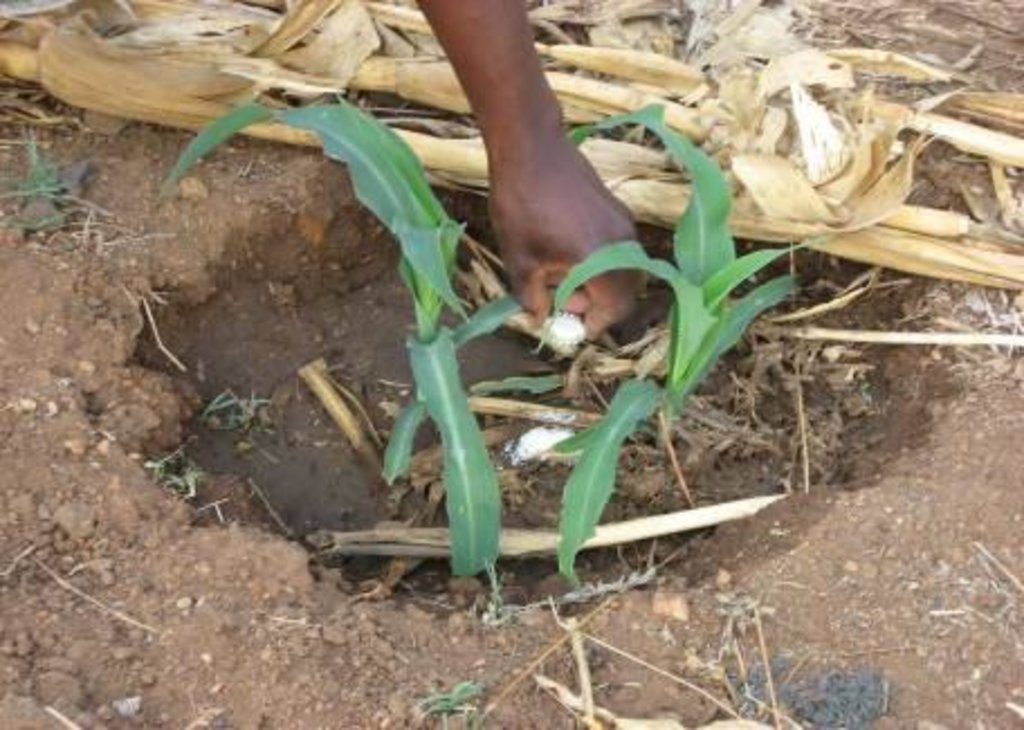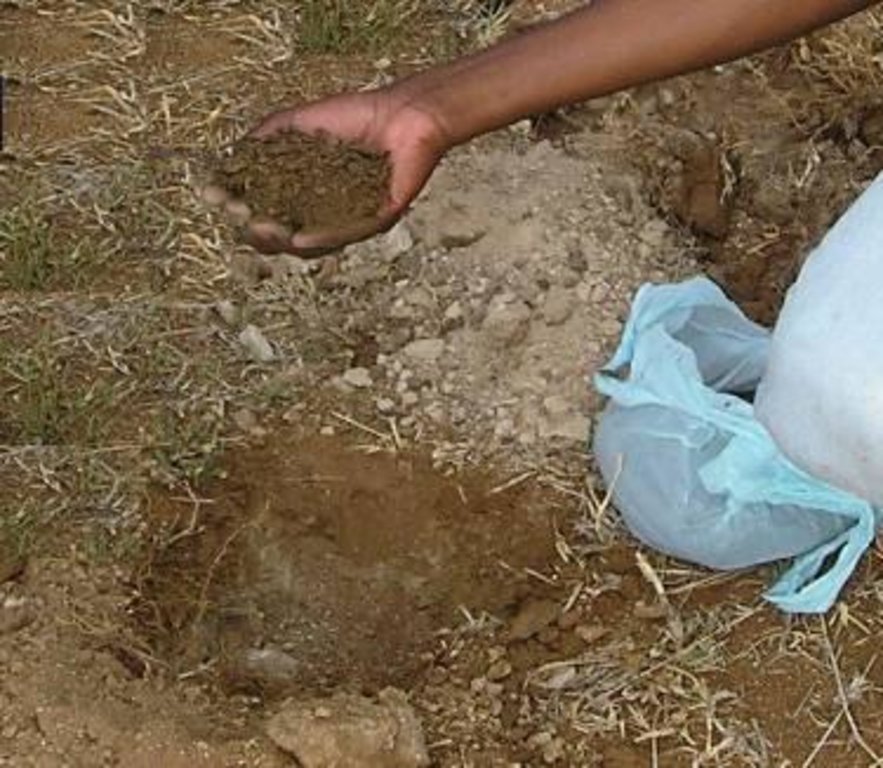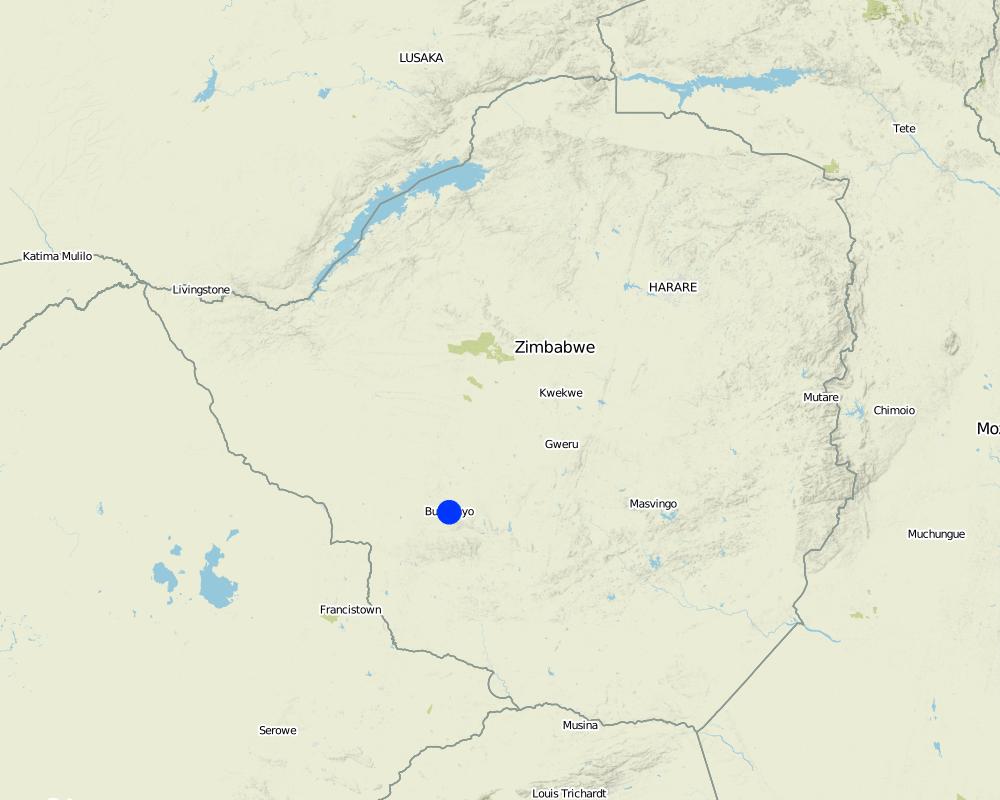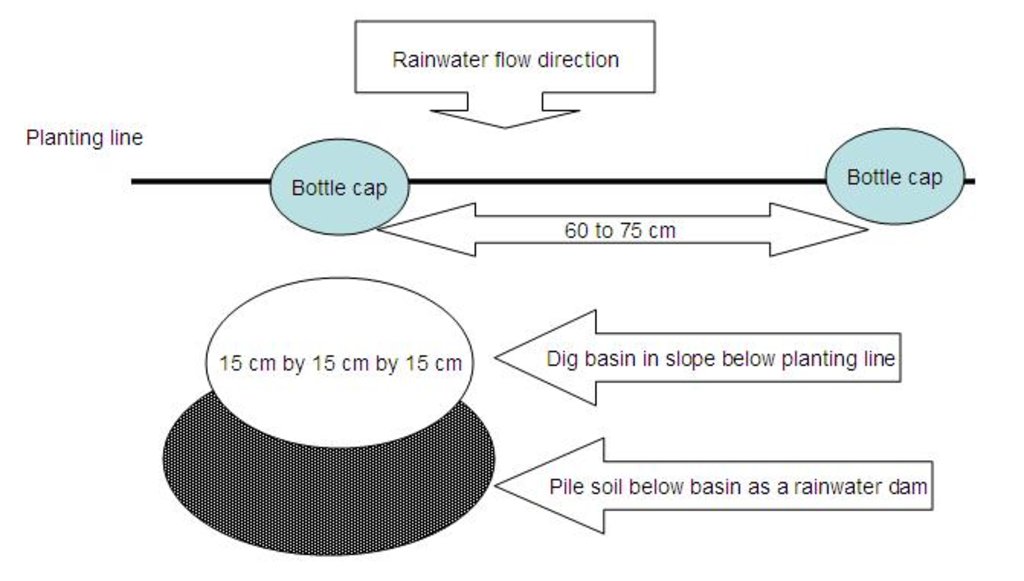Precision Conservation Agriculture [Zimbabwe]
- Creation:
- Update:
- Compiler: Stephen Twomlow
- Editor: –
- Reviewers: Deborah Niggli, Alexandra Gavilano
technologies_1327 - Zimbabwe
View sections
Expand all Collapse all1. General information
1.2 Contact details of resource persons and institutions involved in the assessment and documentation of the Technology
Name of project which facilitated the documentation/ evaluation of the Technology (if relevant)
Book project: SLM in Practice - Guidelines and Best Practices for Sub-Saharan Africa (SLM in Practice)1.3 Conditions regarding the use of data documented through WOCAT
The compiler and key resource person(s) accept the conditions regarding the use of data documented through WOCAT:
Ja
1.4 Declaration on sustainability of the described Technology
Is the Technology described here problematic with regard to land degradation, so that it cannot be declared a sustainable land management technology?
Nee
2. Description of the SLM Technology
2.1 Short description of the Technology
Definition of the Technology:
Precision Conservation Agriculture combines aspects of conservation agriculture and precision application of fertilizer.
2.2 Detailed description of the Technology
Description:
Precision Conservation Agriculture (PCA) is a combined technology that encompasses four basic principles: 1) minimum tillage – e.g. using planting basins which enhance the capture of water from the first rains and allow efficient application of limited nutrient resources with limited labor input; 2) the precision application of small doses of nitrogen-based fertilizer to achieve higher nutrient efficiency (from organic and/or inorganic sources); 3) combining improved fertility with improved seed for higher productivity; and 4) use of available residues to create a mulch cover that reduces evaporation losses and weed growth. Crop mixes are adapted to the local conditions and household resource constraints. Cereal/legume rotations are desirable. PCA spreads labor for land preparation over the dry seasons and encourages more timely planting, resulting in a reduction of peak labor loads at planting, higher productivity and incomes. Over four years these simple technologies have consistently increased average yields by 50 to 200% in more than 50,000 farm households. These strategies are promoted by ICRISAT, FAO and NGOs in Southern Africa focusing on low potential zones where most of the most resource-poor and vulnerable farm households exist.
Components of CF Planting Basins Package promoted in Zimbabwe:
1. Winter weeding: The first step in preparing a field using CF methods is to remove all weeds. This should be done soon after harvesting in May/June. Weeding is done using implements such as hand hoes and machetes that disturb the soil as little as possible. The importance of weeding before land preparation is to ensure that the plot is weed-free at basin preparation and also to prevent the dispersal of weed seeds.
2. Digging planting basins: Planting basins are holes dug in a weed-free field into which a crop is planted. The basins are prepared in the dry season from July to October. The recommended dimensions of the basin are 15×15×15 cm, spaced at either 75×60 cm for rainfalls of 650 to 900 mm and either 75x75 cm or 90×60 cm for Natural rainfalls of 400 to 650 mm. The basins enable the farmer to plant the crop after the first effective rains when the basins have captured rainwater and drained naturally. Seeds are placed in each basin at the appropriate seeding rate and covered with clod-free soil. The advantage of using basins is that they enhance the capture of water from the first rains of the wet season and enable precision application of both organic and inorganic fertilizer as it is applied directly into the pit and not broadcast.
3. Application of crop residues: Crop residues are applied on the soil surface in the dry season, soon after harvesting if available. Ideally the residues should provide at least 30% soil cover. The mulch buffers the soil against extreme temperatures (thereby reducing soil evaporation), cushions the soil against traffic, and suppresses weeds through shading and improves soil fertility.
4. Application of manure: Fertility amendments are applied soon after land preparation in the dry season. In CF, the application of both organic and inorganic fertilizers is recommended as they complement each other. Organic fertilizers such as manure and/or composts are applied at a rate of at least a handful per planting basin. More can be used in wetter areas.
5. Application of basal fertilizer: Inorganic basal fertilizer is also applied soon after land preparation before the onset of the rains. One level beer bottle cap is applied per planting basin and covered lightly with clod-free soil. This is equivalent to 80 kg of compound fertilizer per hectare. Application rates can be increased in wetter areas and may depend on crop types.
6. Application of topdressing: Nitrogen fertilizer is applied to cereal crops at the 5 to 6 leaf stage soon after the first weeding at a rate of one level beer bottle cap per basin. This is equivalent to 80 kg of ammonium nitrate fertilizer per hectare. Application is done on moist soils. Precision application ensures that the nutrients are available where they are needed. Application rates can be increased in wetter areas and may depend on crop types.
7. Timely weeding: In conventional tillage systems, farmers plough/cultivate repeatedly in order to suppress weeds. With reduced tillage, weeds can be a problem requiring more effort initially. One strategy is to weed in a timely manner (ie, when the weeds are still small) preventing the weeds from setting seed. Timely weeding in combination with mulch should eventually lead to effective weed control.
8. Crop rotation: Rotating crops is one of the key principles of CF. Cereal/legume rotations are desirable because the cereal benefits from nitrogen produced by the Rhizobium associated with the legume, and the legume benefits from the residues produced by the cereal. The advantages of crop rotation include improvement of soil fertility, controlling weeds, pests and diseases, and producing different types of outputs, which reduce the risk of total crop failure in cases of drought and disease outbreaks.
2.3 Photos of the Technology
2.5 Country/ region/ locations where the Technology has been applied and which are covered by this assessment
Country:
Zimbabwe
Further specification of location:
Bulawayo
Map
×2.6 Date of implementation
If precise year is not known, indicate approximate date:
- less than 10 years ago (recently)
2.7 Introduction of the Technology
Specify how the Technology was introduced:
- during experiments/ research
3. Classification of the SLM Technology
3.1 Main purpose(s) of the Technology
- improve production
3.2 Current land use type(s) where the Technology is applied

Cropland
- Annual cropping
Comments:
Major land use problems (land users’ perception): soil fertility decline and reduced organic matter, soil erosion by water, sealing and crusting
3.4 SLM group to which the Technology belongs
- integrated soil fertility management
3.6 SLM measures comprising the Technology

agronomic measures
- A1: Vegetation/ soil cover
- A2: Organic matter/ soil fertility

vegetative measures
- V5: Others

structural measures
- S11: Others

management measures
- M1: Change of land use type
- M4: Major change in timing of activities
3.7 Main types of land degradation addressed by the Technology

soil erosion by water
- Wt: loss of topsoil/ surface erosion

chemical soil deterioration
- Cn: fertility decline and reduced organic matter content (not caused by erosion)

physical soil deterioration
- Pk: slaking and crusting
Comments:
Secondary causes of degradation: soil management
3.8 Prevention, reduction, or restoration of land degradation
Specify the goal of the Technology with regard to land degradation:
- prevent land degradation
- reduce land degradation
4. Technical specifications, implementation activities, inputs, and costs
4.1 Technical drawing of the Technology
4.2 Technical specifications/ explanations of technical drawing
Vertical interval and spacing between structures / vegetative strips
Date: 1st November 2009
Technical knowledge required for field staff / advisors: high (Change in attitudes)
Technical knowledge required for land users: high (Change in attitudes)
4.4 Establishment activities
| Activity | Type of measure | Timing | |
|---|---|---|---|
| 1. | 1.Layout of contours with the use of an A-frame before land preparation, place wooden pegs along the contours | Vegetative | during dry season |
4.6 Maintenance/ recurrent activities
| Activity | Type of measure | Timing/ frequency | |
|---|---|---|---|
| 1. | Direct seeding /fertilizer (NPK) banding using no-till drill | Agronomic | Eearly November |
| 2. | Direct seeding /fertilizer (NPK) banding using no-till drill | Agronomic | Eearly November |
| 3. | Leave fields to fallow for 18 months, apply herbicide if needed | Agronomic | afther harvest |
| 4. | Leave fields to fallow for 18 months, apply herbicide if needed | Agronomic | afther harvest |
4.7 Costs and inputs needed for maintenance/ recurrent activities (per year)
| Specify input | Unit | Quantity | Costs per Unit | Total costs per input | % of costs borne by land users | |
|---|---|---|---|---|---|---|
| Labour | labour | ha | 1.0 | 108.0 | 108.0 | |
| Equipment | hand hoes | ha | 1.0 | 7.0 | 7.0 | |
| Fertilizers and biocides | fertilizer | ha | 1.0 | 69.0 | 69.0 | |
| Total costs for maintenance of the Technology | 184.0 | |||||
5. Natural and human environment
5.1 Climate
Annual rainfall
- < 250 mm
- 251-500 mm
- 501-750 mm
- 751-1,000 mm
- 1,001-1,500 mm
- 1,501-2,000 mm
- 2,001-3,000 mm
- 3,001-4,000 mm
- > 4,000 mm
Specifications/ comments on rainfall:
Summer rains October/November to March 79 to 179 days
Agro-climatic zone
- semi-arid
- arid
5.2 Topography
Slopes on average:
- flat (0-2%)
- gentle (3-5%)
- moderate (6-10%)
- rolling (11-15%)
- hilly (16-30%)
- steep (31-60%)
- very steep (>60%)
Landforms:
- plateau/plains
- ridges
- mountain slopes
- hill slopes
- footslopes
- valley floors
Altitudinal zone:
- 0-100 m a.s.l.
- 101-500 m a.s.l.
- 501-1,000 m a.s.l.
- 1,001-1,500 m a.s.l.
- 1,501-2,000 m a.s.l.
- 2,001-2,500 m a.s.l.
- 2,501-3,000 m a.s.l.
- 3,001-4,000 m a.s.l.
- > 4,000 m a.s.l.
5.3 Soils
Soil depth on average:
- very shallow (0-20 cm)
- shallow (21-50 cm)
- moderately deep (51-80 cm)
- deep (81-120 cm)
- very deep (> 120 cm)
Topsoil organic matter:
- low (<1%)
5.6 Characteristics of land users applying the Technology
Market orientation of production system:
- subsistence (self-supply)
Relative level of wealth:
- poor
- average
Individuals or groups:
- individual/ household
Level of mechanization:
- manual work
- animal traction
Indicate other relevant characteristics of the land users:
Land users applying the Technology are mainly common / average land users
Population density: 10-50 persons/km2
5.7 Average area of land owned or leased by land users applying the Technology
- < 0.5 ha
- 0.5-1 ha
- 1-2 ha
- 2-5 ha
- 5-15 ha
- 15-50 ha
- 50-100 ha
- 100-500 ha
- 500-1,000 ha
- 1,000-10,000 ha
- > 10,000 ha
Is this considered small-, medium- or large-scale (referring to local context)?
- small-scale
5.8 Land ownership, land use rights, and water use rights
Land ownership:
- communal/ village
6. Impacts and concluding statements
6.1 On-site impacts the Technology has shown
Socio-economic impacts
Production
crop production
Quantity before SLM:
400 kg/ha
Quantity after SLM:
1520 kg/ha
Comments/ specify:
increase varies between 50-200%, depending on rainfall regime, soil types and fertility, and market access
fodder production
Quantity before SLM:
600 kg/ha
Quantity after SLM:
2200 kg/ha
fodder quality
risk of production failure
product diversity
land management
Income and costs
farm income
Socio-cultural impacts
food security/ self-sufficiency
Quantity before SLM:
1.8 ha
Quantity after SLM:
0.6 ha
Comments/ specify:
Household meets food needs from less land
cultural opportunities
community institutions
Comments/ specify:
Community work groups using establishment
SLM/ land degradation knowledge
situation of socially and economically disadvantaged groups
Ecological impacts
Water cycle/ runoff
water quality
Comments/ specify:
Dependent on number adopting in community/catchment
harvesting/ collection of water
surface runoff
evaporation
Soil
soil moisture
soil cover
soil loss
soil crusting/ sealing
soil compaction
nutrient cycling/ recharge
soil organic matter/ below ground C
Biodiversity: vegetation, animals
biomass/ above ground C
beneficial species
Climate and disaster risk reduction
emission of carbon and greenhouse gases
6.3 Exposure and sensitivity of the Technology to gradual climate change and climate-related extremes/ disasters (as perceived by land users)
Gradual climate change
Gradual climate change
| Season | Type of climatic change/ extreme | How does the Technology cope with it? | |
|---|---|---|---|
| annual temperature | increase | well |
Climate-related extremes (disasters)
Meteorological disasters
| How does the Technology cope with it? | |
|---|---|
| local rainstorm | not known |
Climatological disasters
| How does the Technology cope with it? | |
|---|---|
| drought | well |
Other climate-related consequences
Other climate-related consequences
| How does the Technology cope with it? | |
|---|---|
| reduced growing period | well |
6.4 Cost-benefit analysis
How do the benefits compare with the establishment costs (from land users’ perspective)?
Short-term returns:
positive
Long-term returns:
very positive
How do the benefits compare with the maintenance/ recurrent costs (from land users' perspective)?
Short-term returns:
positive
Long-term returns:
very positive
6.5 Adoption of the Technology
Comments:
50000 land user families have adopted the Technology with external material support
0.3 had under basins in 2008 – so about 15,000 ha across Zimbabwe
There is a strong trend towards spontaneous adoption of the Technology
Over the last 4 years a steady trend in increase in area each household as under basins
6.7 Strengths/ advantages/ opportunities of the Technology
| Strengths/ advantages/ opportunities in the compiler’s or other key resource person’s view |
|---|
| PCA spreads labour for land preparation over the dry season and encourages more timely planting, resulting in a reduction of peak labour loads at planting, higher productivity and incomes |
| Over four years these simple technologies have consistently increased average yields by 50 to 200%, depending on rainfall regime, soil types and fertility, and market access |
6.8 Weaknesses/ disadvantages/ risks of the Technology and ways of overcoming them
| Weaknesses/ disadvantages/ risks in the compiler’s or other key resource person’s view | How can they be overcome? |
|---|---|
| Availability of residues to achieve the minimum 30% soil cover | Accept that in agro-pastoral systems where residues are at a premium demonstrate benefits of residues management – but allow households to decide |
| Access to fertilizer at cost effective prices | Input market development and identification of enabling government policies |
| Rotations and legumes poorly adopted | Allow households to become familiar with technology and meet subsistence food requirements before promoting rotations. Ensure availability of good quality seeds and markets to meet extra legume production |
7. References and links
7.1 Methods/ sources of information
- field visits, field surveys
- interviews with land users
7.2 References to available publications
Title, author, year, ISBN:
Hove L, Twomlow S. 2008. Is conservation agriculture an option for vulnerable households in Southern Africa? Paper presented at the Conservation Agriculture for Sustainable Land Management to Improve the Livelihood of People in Dry Areas Workshop, United
Available from where? Costs?
ICRISAT web site – www.icrisat.org or FAO
Title, author, year, ISBN:
Mazvimavi K, Twomlow S, Belder P, Hove L. 2007. An Assessment of the Sustainable Uptake of CF in Zimbabwe. Global Theme on Agroecosystems Report No 39. ICRISAT, Bulawayo. 69pp.
Available from where? Costs?
ICRISAT – www.icrisat.org
Title, author, year, ISBN:
Mazvimavi, K., Twomlow, S. Socioeconomic and institutional factors influencing adoption of conservation farming by vulnerable households in Zimbabwe. Agr. Syst. (2009), doi:10.1016/j.agsy.2009.02.002
Available from where? Costs?
Elsevier – Agricultural Systems
Title, author, year, ISBN:
Twomlow,S., Hove, L., Mupangwa, W., Masikati, P., Mashingaidze,N. 2009. Precision Conservation Agriculture For Vulnerable Farmers In Low-Potential Zones In Humphreys, E. and Bayot, R.S. (Editors). 2009. Increasing the productivity and sustainability of r
Available from where? Costs?
xxx
Title, author, year, ISBN:
Zimbabwe Conservation Agriculture Task Force, 2009. Farming for the future: A guide to conservation agriculture in Zimbabwe. ISBN 978-07974-3735-7
Available from where? Costs?
FAO Emergency Office Zimbabwe Michael.jenrich@fao.org
Links and modules
Expand all Collapse allLinks
No links
Modules
No modules


